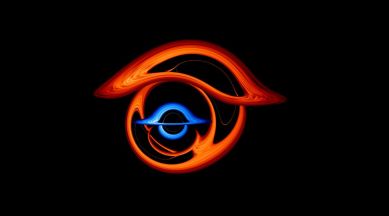Astronomers propose using lensed gravitational waves to measure universe expansion
Astronomers propose using lensed gravitational wave signals to accurately measure how quickly the universe is expanding.

We have known for about a century that the universe is expanding but we are still not sure how fast it is expanding and how quickly different celestial objects are moving away from each other.
Since we discovered that the universe is expanding, we have repeatedly measured and remeasured the rate at which that happens with increased precision. Some of the latest values range from 67.4 to 76.5 kilometres per second per megaparsec. That unit may be quite complicated as it is a measure of “recession velocity” (kilometres per second) with respect to the distance (in parsecs). One parsec is about 3.3 light-years.
This difference between different measures of cosmic expansion is called “Hubble tension.” And now, astronomers are proposing a way to use gravitational waves to help get a more accurate measurement of the universe’s expansion.
Gravitation waves were first discovered in 2015 using LIGO detectors but the detectors and methods used to discover them have improved significantly. In a new study published in the journal Physical Review Letters, scientists say that this will yield large samples of gravity wave signals in the coming years. They propose using “lensed” gravitational waves to measure the expansion of the universe.
How is cosmic expansion measured
Measures of cosmic expansion relate to distance and velocity. There are primarily two methods of measuring those cosmic distances. In the first kind, astronomers start with known lengths or “Standard rulers” and look at how big they appear in the night sky.
The other kind of methods usually start with objects that have a known luminosity ‘standard candles” and then measure their distance from Earth using their apparent brightness. Then, these distances are connected to those of objects farther away. This process is repeated and is used to build a system of measurements that is called the “cosmic distance ladder.”
Using lensed gravitational waves
The new method proposed by the researchers belongs to the second type but uses gravitational lensing. Gravitational lensing is when massive objects in space can warp spacetime. This bends all kinds of waves that travel near the objects, distorting them. The phenomenon is typically used to describe when light waves are bent.
As we have seen before, sometimes, extreme lensing of some objects can make them visually appear as multiple objects in the sky. Just like that, lensing can produce multiple copies of the same gravitational signal that can reach Earth at different times. The researchers believe that the delays between the signals could be used to calculate the universe’s expansion rate.
“We understand very well just how sensitive gravitational wave detectors are, and there are no astrophysical sources of confusion, so we can properly account for what gets into our catalog of events. The new method has sources of error that are complementary to those of existing methods, which makes it a good discriminator,” said Tejaswi Venumadhav Nerella, co-author of the paper, in a press statement.
The sources of the gravitational signals that the researchers are looking for will be binary black holes, which are systems of black holes that orbit each other until eventually merging, releasing large amounts of energy in the form of gravitational waves. While strongly lensed examples of such gravitational waves have not yet been detected, researchers believe that could change in a decade or so.